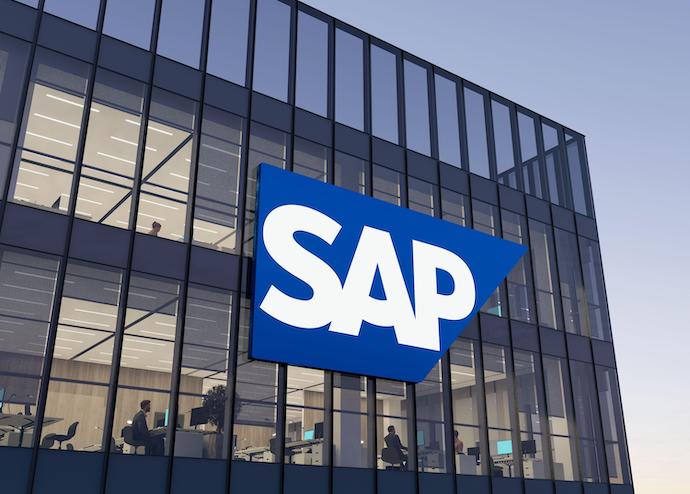ERP giant SAP has made it easier for enterprise organizations to consume its software, creating packaging that simplifies consumption and offering modules that give customers an easier on-ramp to its offerings.

The world seems like it’s headed back to normal operations, but still, everything has changed. That was the vibe as customers of enterprise software giant SAP returned to an in-person event format for the company’s annual Sapphire conference in Orlando, Florida this month (although a virtual option was also still available).
Indeed, the world, industry, and customers have changed significantly since the company held its last in-person event in 2019 -- changes that were acknowledged by SAP CEO Christian Klein in his keynote address.
Klein talked about what he said customers have told him are the three biggest challenges that enterprises are facing in the next decade, accelerated by the changes brought directly or indirectly by the COVID pandemic.
Decade’s Three Biggest Challenges
The first one is the speed of change in industry.
“The most difficult part of any transformation is the DNA and culture, especially when your existing business model is still financially successful,” Klein said. “So far only 25% of enterprises have seen concrete outcomes of their investments in digital transformation.”
The second big challenge is the supply chain. Klein said that over 75% of companies worldwide are experiencing supply chain disruptions.
“In the last decade many parts of our supply chains got outsourced to different suppliers in different countries and with that we increase the complexity,” Klein said. “Now we are seeing how fragile our supply chains are.”
Essentially, “our supply chain lacks end-to-end transparency and as a result lack resiliency and agility.”
The third challenge, Klein said, is sustainability, which is also difficult to act on without transparency.
“We have to run our enterprises more sustainably to fight the climate change,” Klein said, citing data from the consultancy McKinsey showing that up to 70% of profits can be at risk if a company is not working sustainably. “Sustainability has to become a business imperative. The green line is as important as the top and bottom lines.”
SAP’s Biggest Challenges
Klein’s comments come at a time when SAP’s flagship S/4 HANA, which has been a technology upgrade path for SAP enterprise customers since it was initially released in February 2015 -- 7 years ago -- seems to be gaining momentum. Plenty of organizations have held off on migrating thus far because it’s an enormous project in terms of both time and expense at a time when many organizations have favored a lean, fast, and “agile” approach to many of their other technology projects.
SAP’s strategy origins have been more “omni suite”-focused, where a customer buys the whole package from a single vendor and is able to leverage software that has been tested and proven to integrate and work well together. But today, Herbert notes, organizations are looking more for ecosystems or platforms where they can consume software from a number of different providers. The S/4 HANA flagship technology fits that original model.
“It’s not uncommon that a customer of the ilk who uses SAP could be looking at tens of millions of dollars or even over $100 million of investment to migrate to S/4 HANA, so it’s a very significant question,” says Forrester VP Liz Herbert. “No surprise they are taking their time to evaluate it.”
Still, Herbert says that S/4 HANA has gained more momentum over time, even as customers continue to proceed with caution when it comes to the mammoth project of an upgrade. As with any enterprise software, moves to new platforms become more urgent as the deadline looms for end-of-support by SAP for existing products.
To help ease with the transition to the newer platform, one thing SAP has done in recent years is enabling more modular deployments of SAP platforms, Herbert says. There is now a greater focus on the ecosystem and the module.
“There are companies that start with just one module or just one country or one division so they can get that first implementation in months rather than years,” she says. “There are some new strategies and new elements of their architecture that allow that.”
RISE with SAP, introduced a little over a year ago, is one of these offerings that makes it easier for customers to get started with SAP. It packages a number of SAP technologies and services together with the services of relevant partners into a package designed to be simpler for customers to use and consume. For instance, there’s a single contract for all the services in the package. That option for upgrade seems to have grabbed the attention of some customers, according to Klein.
“After one year we already have 2,000 customers who have selected RISE with SAP,” Klein said in his keynote. “More than 60% of these customers are new customers to SAP.”
Sustainability a Big Focus
SAP also put a big focus on the concept of sustainability during the Sapphire event, and that’s something that will continue to grow in importance in the years ahead, according to Herbert. She points out that the UN has a broad definition of sustainability, and it’s about a lot more than just your carbon footprint. It’s an area that SAP is poised to capitalize on, too.
“SAP is actually decently well-positioned for sustainability,” Herbert says.
Another big strength for the company is its deep focus on individual industries. The company has a number of solutions for specific industries that include aspects such as business process benchmarks, but SAP did not showcase this strength as much during Sapphire this year, Herbert says.
“I think it’s important for them to get back to showing the depth and unmatched process expertise,” she says. “Remember they used to have a campaign about how 10 of the top 10 retailers run SAP. That really does get to the essence of why you would spend all this money and invest in SAP -- they can marry a good platform with that process information, prebaked processes, benchmarks, everything else that goes along with it, and they have an ecosystem of partners who can also help.”
What to Read Next:
Fender’s CIO Talks Tuning Up SAP with a Migration to AWS
About the Author(s)
You May Also Like







